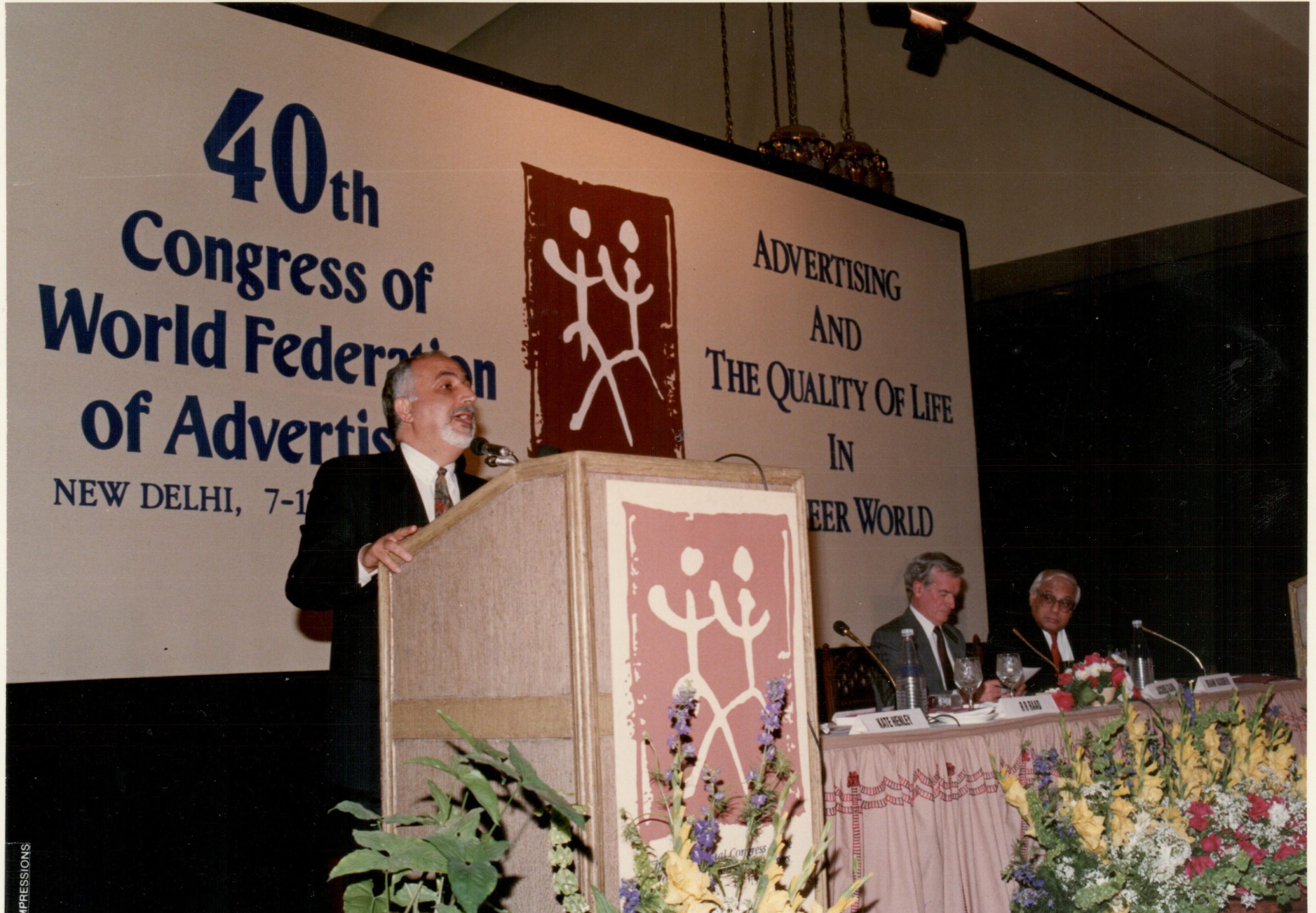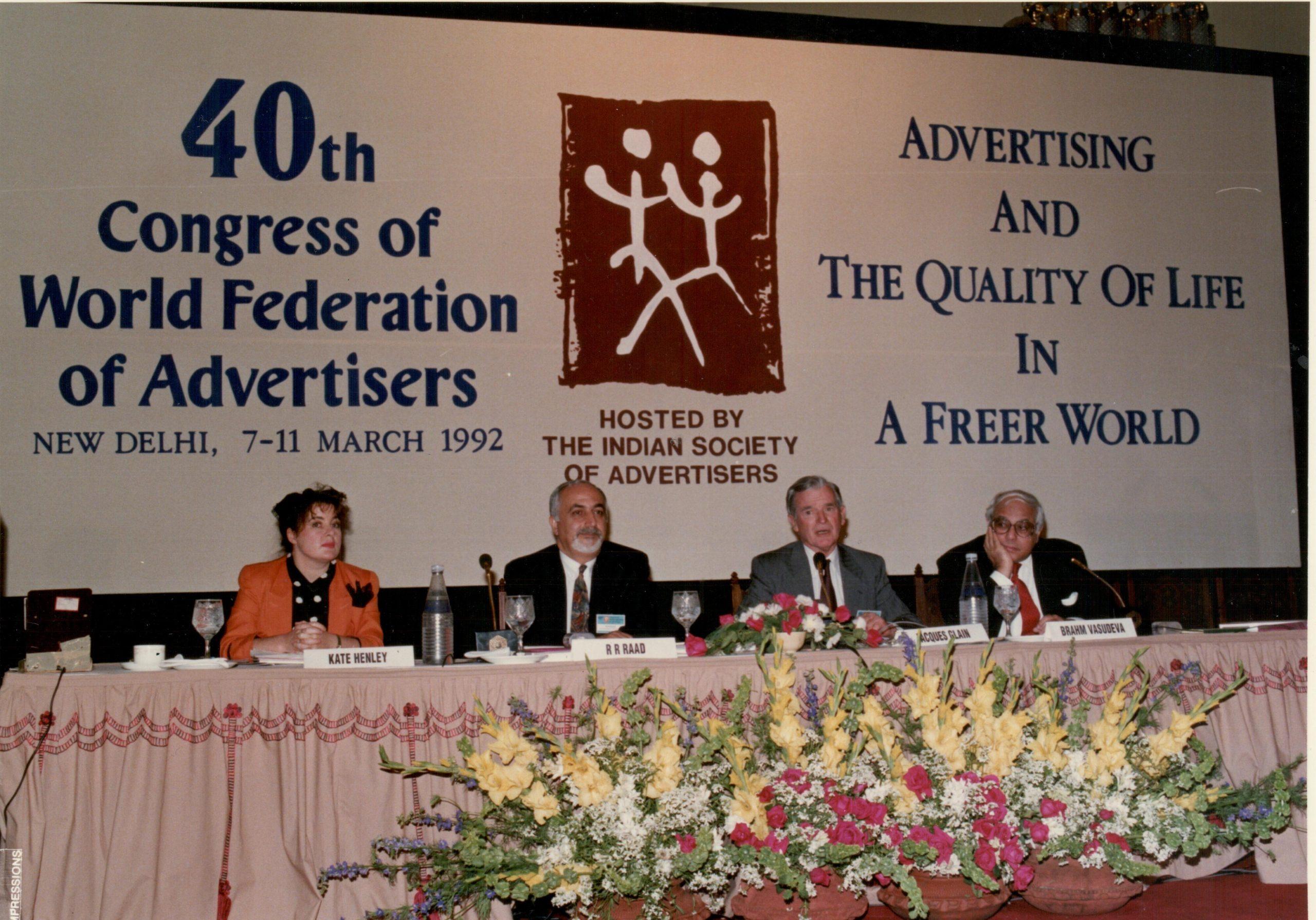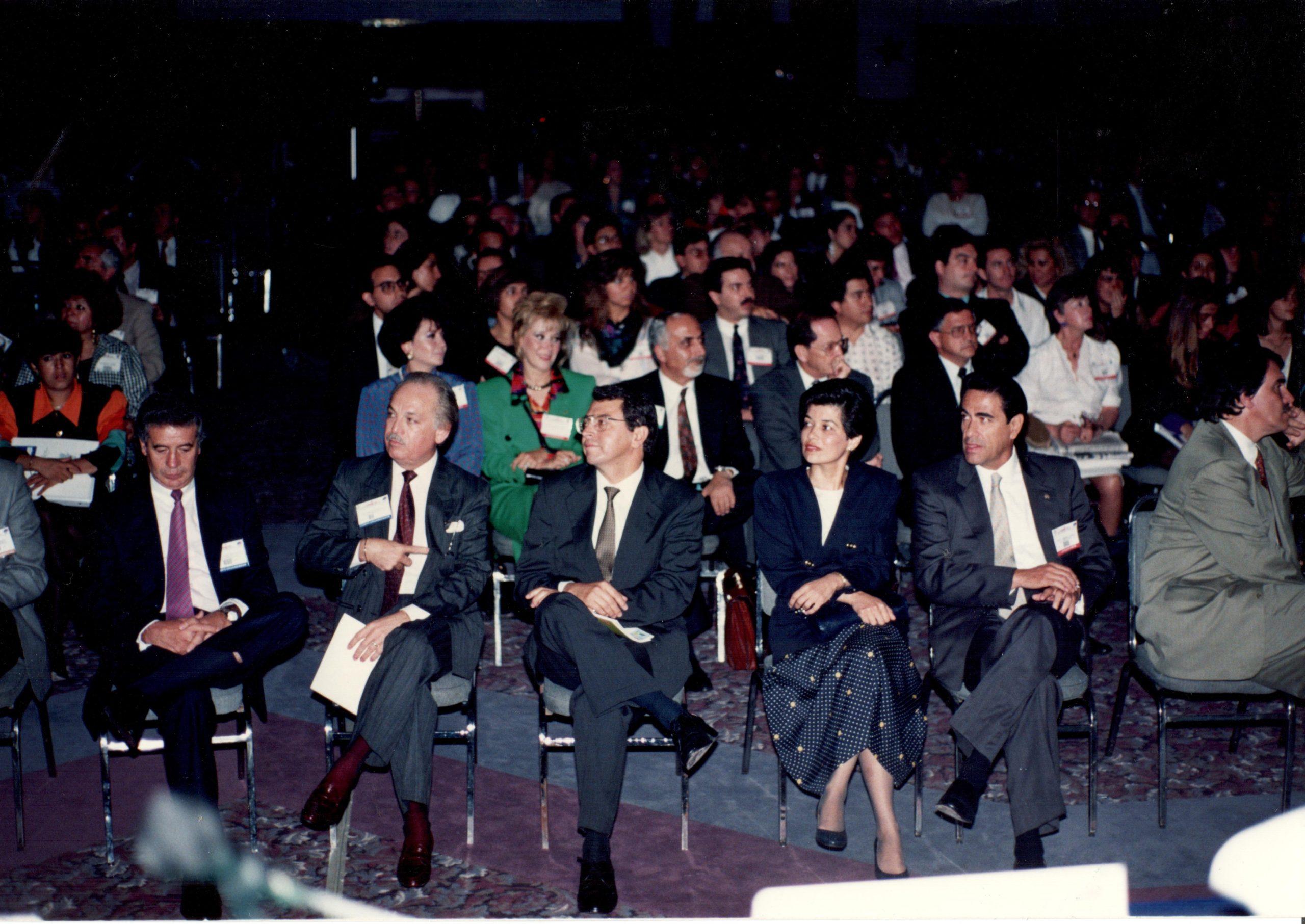The time came when I was named the IAA’s world vice president and area director for the Middle East and North Africa. My first move was to accept an invitation from an old friend, Lewis Mendiola, president of the IAA Mexico Chapter, to present a paper at its Latin American Conference, Apertura, which was planned for September 1991.
I travelled to Mexico via Cairo as I needed a visa and Egypt had the only Mexican embassy in the Arab World, at the time. The ambassador there was a charming lady who granted me a visa in record time, but more important were the valuable statistics she gave me. I updated my presentation, “Trading opportunities with the Arab markets”, and flew to Frankfurt, where I boarded Lufthansa’s 14-hour, non-stop flight to Mexico.
My paper was of great interest to the Mexican business community and certain sessions of the conference were open to the public. To my surprise, in the front row I spotted Joe Boulos, an old client of mine from the time I was handling the P&G account in Lebanon. Joe had moved from P&G to join SC Johnson (Johnson Wax), which had appointed him general manager of its operations in Mexico. Joe had read my name on the conference agenda and made the time to come and see me. Hearing the story of Joe’s career made me so proud of the achievements of my Lebanese friend.
The Mexico conference was also an opportunity to spend time with old IAA colleagues, such as Heather Leembruggen, Peter Combaz and Claude Chauvet. On the personal front, I used my bulky Sony video camera to film every step of my visit. I also seized the opportunity to meet with an old acquaintance, Vicky Acevedo, the commissioner of the Hong Kong Trade Development Council in Mexico, who gave me a genuine taste of authentic Mexican hospitality at the famous Hacienda Del Morales.
My submergence in global advertising was extended to New Delhi during the same year. The invitation I received was from the World Federation of Advertisers, which wanted me to participate in a panel entitled “Should all products be advertised” at its 40th World Congress. My focus was about advertising to children, and I cited the many cases of confectionary advertising targeting children in the Gulf, which had led to a crisis of obesity. In my review I also referred to the children of Lebanon, whose parents – keen to pacify them and to keep them away from the sounds and news of war – could only afford cheap locally manufactured or Turkish wafer bars, which gradually developed into a health problem.
Conferences provide opportunities for self-learning, and I was most impressed by my Indian co-panelist, who cited the example of the defeated Japanese after World War Two, some of whom tried to block the reception of American TV stations. The conservative Japanese did not want their countrymen to watch advertising for refrigerators, washing machines, electric irons, and dishwashers, as none of these electrical items were available in a nation whose factories and workforce had been dedicated to the war effort. The Indian advertiser concluded his presentation by saying that the enlightened, future-looking Japanese lobby had won this debate. And this is how Matsushita, Toshiba, Sharp, JVC and other Japanese companies grew to beat Frigidaire, Westinghouse, and General Electric when it came to shipping their white goods to the US.
At the end of 1992, I led one more delegation of carefully nominated speakers and a large group of participants to Advista Arabia III. Upon our return to Dubai, we re-created Advista at the Dubai World Trade Centre, with the objective of sharing the presentations of the UAE and Saudi speakers with the local advertising community. Then, in 1998, we returned to Cairo to participate in the 36th IAA World Congress, which was the first world congress to be held in the Arab world. Mustapha Assad and I shared the stage to co-present “Creativity in the Arab world and Africa”. Mustapha showcased creativity in the Arab countries and as expected, he screened a lot of his own agency’s (Publi Graphics) work. When my turn to present came, I could easily notice the quizzical look on the faces of the participants in the packed auditorium, as creativity in Africa was a grossly underestimated matter. My show-reel started with a surprising recognition of the host country, which included some long-forgotten masterpieces of the joint work of Tarek Nour, Sami Abdel Aziz, and Ahmad Badie.
Then I moved to South Africa and screened a sensational pool of TBWA\Hunt\Lascaris’ productions, including BMW’s “Waltzing mouse” and “Beat the bends”, ending with the story of Sam the young cancer patient returning to school with hesitation due to his lost hair and finding all his classmates had shaved their hair. This generated a standing ovation as I was coming down the stage.
All this time the IAA members in Saudi Arabia continued to lobby – in vain – for the establishment of their own local chapter. Saudi laws did not recognize syndicates, nor any other form of trade association. Talal Dhulaymi and Mohammad Fal tried their best, but they eventually gave up, settling instead on the alternative of establishing a GCC Advertising Association (GCCAA). The association was to be managed by a board of directors made up of two national members from each of the six GCC states. The chairman should be a Saudi. It took time to identify two national advertising PR practitioners from some of the GCC states. In the UAE, I was nominated together with Abdullah Al Ghurair, who, in 1992, remained the only UAE national working in advertising.
As soon as the board was formed, we began rotating our meetings in each of the member states, and each of these first meetings was followed by a reception for the advertising community to initiate membership and to publicize the association. As the GCCAA began its activities, our entrepreneurial Egyptian friend Tarek Nour reached the stage where he wanted to wind down his subsidiary, AAPIC, and sell Advista Arabia. The GCCAA seemed to be an ideal experimental launch pad for this idea. Advista Arabia IV was held in Bahrain as a joint effort between the brand owners and the new regional advertising association. Obviously, there was a surge in Saudi participation, but Cairo’s charm was certainly not replaced by all that Bahrain had to offer.
In the Nineties there were no universities nor technical schools around the GCC that provided education to young people who wanted to pursue a career in any communication discipline. In partnership with the IAA Educational Global Program, the GCCAA opened an advertising academy in Bahrain, for which they hired an English principal, who was supported by a rotating group of senior agency executives who visited Bahrain to lecture. A project of this magnitude could not succeed if it was driven only by volunteers. It required wholehearted hands-on involvement from its initiators, and this is why the academy was short-lived and it had to be closed.
When I took over my IAA vice presidency, I resigned my responsibility at the head of the UAE Chapter and called for the election of a new president. From the very first day in the UAE Chapter’s history, there had existed a non-written agreement that the presidency would rotate amongst the tripartite. For one term the president would be an ad man, for the second term it would be an advertiser, then a media person. I was elected after Burjor Patel, the advertising manager of the Khaleej Times, and I was due to hand over to an advertiser. Sadly, the moment I announced my resignation, a dormant lobby from within the membership base surfaced and the presidency of the chapter went exclusively to a group of Lebanese agency chiefs.
From that moment, I distanced myself from anything that had to do with industry initiatives, convinced that collective industry issues and public service initiatives required a special breed of selfless people who were willing to embrace such challenges and take them to a noble conclusion.


